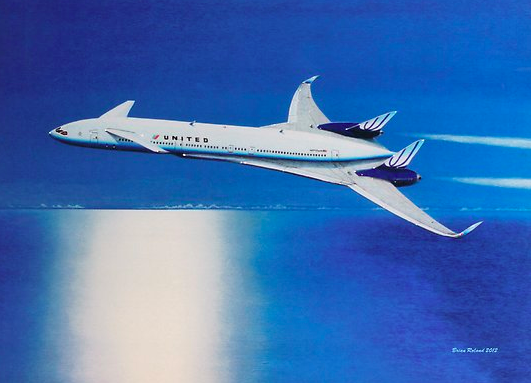What is Preventing the Return of Supersonic Commercial Jets?

Photo Courtesy of http://bit.ly/2nzTZ2N
Featured here is Boeing’s Sonic Cruiser, a supersonic jet prototype of theirs developed in 2001 but never constructed.
October 2, 2019
Since the Concorde’s last flight in 2003, many have been wondering when supersonic air travel will return. Of course, it will not make a return if there is no market in it, but companies like Boom Technology, Aerion Supersonic, and of course, Boeing, have been developing supersonic planes and ensuring that there is interest in them. Some models, such as Boom’s Overture, have their first flight scheduled for as early as 2023. This has caused concern in the aviation world, specifically from Airports Council International (AIC), who has shown skepticism in the return of supersonic air travel.
Since it was only used on a small scale up to 2003, supersonic air travel was poorly regulated. Despite scientific evidence showing that these jets were, in fact, more polluting than subsonic airliners, the International Civil Aviation Organization (ICAO) failed to regulate the industry heavily. In fact, the only major regulation was that since the sonic boom created by the plane’s breaking of the sound barrier would be damaging to buildings and other construction beneath it, the plane could only fly transatlantic. This would ensure that by the time the plane had accelerated quickly enough to break the sound barrier, it would be above the ocean and pose no threat to any infrastructure below. The ICAO did not regulate the plane’s ludicrous fuel consumption which had even more of an environmental impact since it was flying at roughly 60,000 feet, a significantly higher altitude than subsonic airliners. On average, the plane would burn two tons of fuel just by leaving the gate and heading to the runway! These numbers may not sound so absurd, but when considering that the plane only carried a rarely-filled maximum of 128 passengers, it is indeed an absurd amount of fuel consumption. And the final problem of supersonic air travel was the noise produced by it, which leads to a plethora of physiological health problems. Again, since there was a small number of supersonic flights, there really never was a true urge for supersonic air travel to be regulated.
Yesterday the AIC expressed their concerns to ICAO about addressing these factors of supersonic air traffic that were previously left unaddressed, consequential to the return of this air travel in the near future. In this proactive step, the AIC urged ICAO to make regulations on this form of air travel before it returns to the market in a potentially bigger scale. Since companies like Boom, Aerion, and Boeing have advertised that their new supersonic airliners will be made affordable and comparable to the prices of business class seats on subsonic airliners, it will probably appeal to more and more people and therefore experience more widespread use. AIC shared that it is important to address these regulations now so supersonic air travel does not weaken the progress already made in regulating subsonic jets. The environmental and physiological complications that could arise with the return of supersonic jets are simply yet to be addressed and regulated, but hopefully they will be in a timely fashion.
